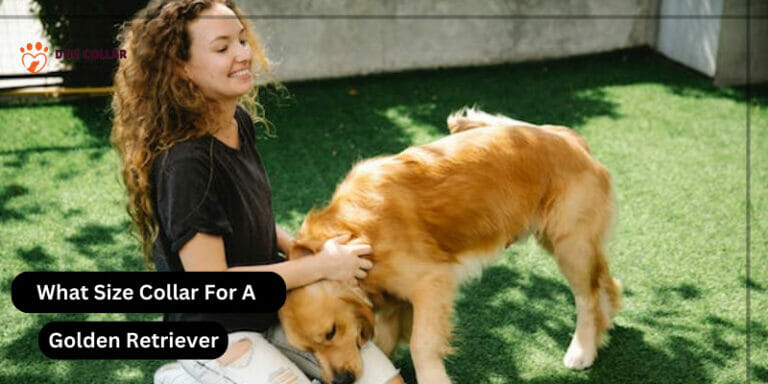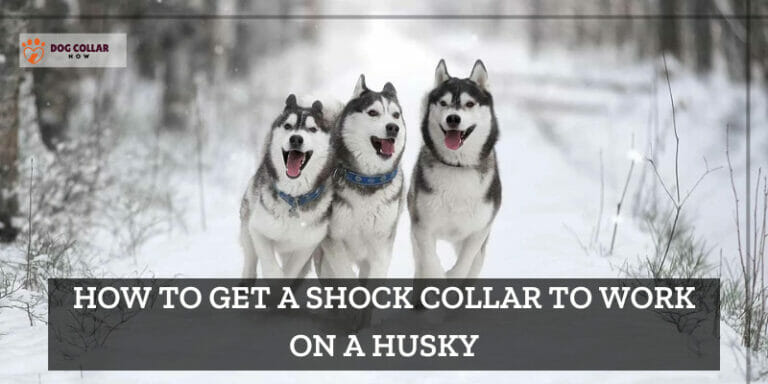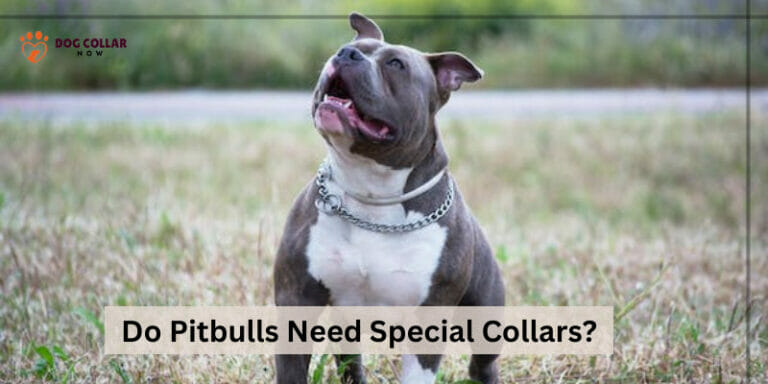Dog Body Harness Vs Collar – Making the Right Choice

Deciding Between a Dog Body Harness and Collar for a Tail-Wagging Walking Experience. One of the most important decisions you’ll make is choosing between a collar and a harness for your pup.
The main difference between a dog body harness and a collar is their design and function. Both have their pros and cons, but which one is better? It’s not just about fashion or personal preference – it could affect your dog’s comfort, health, and safety.
Here we’ll discuss of dog body harness vs collar to help you make an informed decision. Whether you’re dealing with a big breed puppy that pulls on the leash or need to ensure that your brachycephalic pup doesn’t put too much pressure on its trachea – we’ve got everything covered!
Harness or Collar: What Is The Main Difference?
When it comes to deciding between a harness or collar for your furry friend, there is no one-size-fits-all answer. Your choice should depend on various factors such as your dog’s breed, age, size, and behavior.
Collars are suitable for most dogs and are typically used with a leash. However, they can cause discomfort around the neck and may not be suitable for dogs that pull on their leash or have respiratory issues like brachycephalic breeds.
On the other hand, harnesses distribute pressure across the chest rather than only around the neck area. This makes them ideal for dogs prone to pulling or those who require good control during walks. Additionally, front-clip harnesses can help deter pulling by redirecting your pup’s attention toward you.
It’s essential to note that using both a collar and harness together is also an option. A collar with an ID tag is crucial in case your pup gets lost while out walking. You could opt for a martingale collar if you’re worried about slipping over their head while ensuring they don’t choke themselves when tugging.
Ultimately it comes down to what works best for you and your pup!
Pros and Cons of Dog Collars
It’s important to weigh these pros and cons and consider your dog’s specific needs, behavior, and health conditions when deciding whether to use a collar.
| Pros | Cons |
| Convenient for attaching identification tags | The potential risk of injury, especially with improper use or fitting |
| Easy to put on and take off | Can cause discomfort or restriction if too tight or used incorrectly |
| Versatile in terms of styles and designs | Limited control over dogs that pull or lunge on the leash |
| Can be used as a fashion accessory | May increase the risk of neck or throat-related issues |
| Often more affordable than harnesses | Limited distribution of pressure, potentially leading to strain or injury |
Regularly check the collar’s fit and condition to ensure your dog’s comfort and safety.
Tips for Buying a Dog Collar
When it comes to buying a dog collar, there are several things you need to keep in mind.
- Consider the size and breed of your pup. The collar should fit comfortably around their neck without being too tight or too loose.
- Further think about the material of the collar. Leather collars are durable and long-lasting while nylon ones may be more lightweight and come in various colors.
- More crucial factor is the type of closure on the collar – buckle or snap closures are both secure options but make sure they’re not too difficult for you to remove quickly if needed.
- If your dog tends to pull on their leash during walks, consider purchasing a martingale collar or a no-pull harness with a front clip attachment for good control.
- Always ensure that your dog’s ID tag is securely attached to its collar at all times for safety purposes.
By keeping these tips in mind when buying a dog collar, you can find one that fits well, feels comfortable for your pup, and provides them with security during walks.
Dog Collar Recommendations
When it comes to selecting a collar for your furry friend, there are various factors that need consideration.
- The breed and size of your dog should be kept in mind while making a purchase. A smaller dog might require a thinner collar whereas larger breeds may need something sturdier.
- Followed by material of the collar- leather or nylon? While both provide durability and comfort to some extent, leather collars tend to last longer and have an added aesthetic appeal.
- The other important factor is whether you want to opt for a martingale or choke chain collar. These types of collars can help with training but should only be used under professional guidance as they can cause harm if not used properly.
- Ensure that you add an ID tag along with the collar so that your pup can always find their way back home if lost.
Choosing the right collar for your furry friend involves careful consideration of various factors such as breed, size, material, and purpose.
Pros and Cons of Dog Harnesses
Dog harnesses have become increasingly popular among pet owners and for good reason. They offer a number of benefits over traditional collars that can make your dog’s life happier and healthier. But like any tool, there are pros and cons to using a harness.
| Pros | Cons |
| Better control and reduced risk of injury | May take time for a dog to adjust to wearing a harness |
| Evenly distributes pressure for added comfort | Some harnesses can be complicated to put on and adjust |
| Ideal for dogs with respiratory or neck issues | Certain styles may restrict shoulder movement |
| Discourages pulling and provides better training | Can be more expensive than traditional collars |
| Offers additional support for dogs with mobility | Requires proper sizing and fitting for optimal effectiveness |
| Reduces strain on the neck and throat | May not be suitable for dogs that are already well-behaved |
When considering a harness, it’s important to select the right size and style that suits your dog’s specific needs. Regularly check the harness for any signs of wear or discomfort to ensure your dog’s comfort and safety.
Tips for Buying a Dog Harness
When it comes to buying a dog harness, there are several factors that you should consider.
- You need to determine the size of your pup and get a harness that fits them just right. A loose-fitting harness can cause discomfort while a tight one may restrict movement.
- More important factor is the type of harness. You can choose between front-clip or back-clip styles depending on your dog’s behavior and training needs. Front-clip harnesses are ideal for dogs who tend to pull while back-clip ones offer good control for well-trained dogs.
- The material and design of the harness also matter as they contribute to comfort and durability. High-quality materials like nylon or leather with reinforced stitching will last longer and provide maximum support for your furry friend.
- Don’t forget about style! There are various colors, patterns, and designs available in the market so pick one that suits your pup’s personality!
Remember these tips when purchasing a dog harness so that both you and your pet can enjoy walks together comfortably with good control over their movements without causing any damage or discomfort to them!
Dog Harness Recommendations
When it comes to choosing a dog harness, there are plenty of options available on the market. It’s important to consider your pup’s breed, size, and any specific needs they may have before making a purchase.
For small breeds or brachycephalic dogs with delicate necks, a front clip harness can help distribute pressure evenly across their chest and prevent unnecessary strain. Additionally, no-pull harnesses with front clips can be an effective training tool for dogs who tend to tug on their leash during walks.
For larger breeds or those prone to pulling, back-clip or dual-clip harnesses may provide improved control and stability. Many of these styles also come equipped with padding for added comfort during longer walks or hikes.
When shopping for a dog harness, it’s important to ensure that it fits properly without being too loose or tight. Look for adjustable straps and measure your pup’s girth accurately before making a selection.
Some recommended brands include Ruff wear Front Range Harness, Julius-K9 IDC Power harness, Blue-9 Balance Harness, Pet Safe Easy Sport Dog Harness, and Kurgo Tru-Fit Smart Dog Harness.
When Should a Harness Be Used?
When it comes to choosing between a collar or harness for your furry companion, one of the main considerations is their behavior. If you have a dog that pulls on its leash or tends to slip out of its collar frequently, then using a harness might be better suited for them.
Another scenario where using a harness would be more appropriate is if you have a brachycephalic breed, such as a bulldog or pug. These breeds are known for having respiratory issues due to their short snouts and can benefit from wearing a harness instead of placing pressure on their necks with collars.
Moreover, if you’re planning on taking your puppy hiking or running with you, then investing in a sturdy and comfortable harness will offer improved control over your pup’s movements while reducing the risk of injury.
If you want to use your dog’s walking time as an opportunity to train them not to pull on the leash, then opting for either a front clip harness or no pull harness can help redirect any tugging behavior without causing harm.
Understanding when it’s best to use either type of equipment is essential in keeping your pup safe and comfortable during walks and other outdoor activities.
Conclusions
As a dog owner, it’s clear that there isn’t a one-size-fits-all answer to the collar vs harness debate. After exploring the pros and cons of both options, I’ve come to understand that the choice depends on my individual dog. If my dog is well-behaved, doesn’t pull, and doesn’t have any neck issues, a collar may be suitable.
However, if my dog requires extra control, tends to pull, or has respiratory concerns like brachycephalic breeds, a harness would be a better choice. I’ll consider the comfort, safety, and style of both options and try them out to determine what works best for my furry friend. Ultimately, my dog’s well-being and happiness are my top priorities in making this decision.
FAQs:
Can a dog wear a collar and a harness?
Yes, a dog can wear both a collar and a harness simultaneously.
Are there certain dog breeds that are better with one over the other?
Yes, certain dog breeds may be better suited for either a collar or a harness depending on their specific needs and characteristics.
What kind of leash do vets use?
Vets typically use standard nylon or leather leashes during examinations and procedures.
What is the safest leash for a dog?
The safest leash for a dog is a sturdy, well-made leash made of high-quality materials, such as nylon or leather, with a secure and reliable fastening mechanism.
What type of leash is best for training a dog?
A long training leash or a retractable leash with a reliable locking mechanism is commonly used for training dogs.
What type of leash is best to train a puppy?
A shorter leash, such as a standard 4 to 6-foot leash, is typically best for training a puppy.








